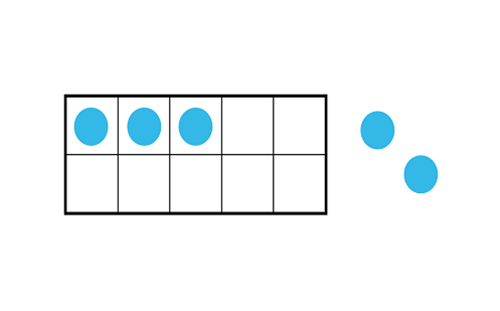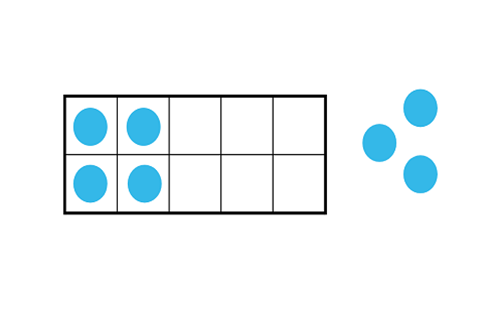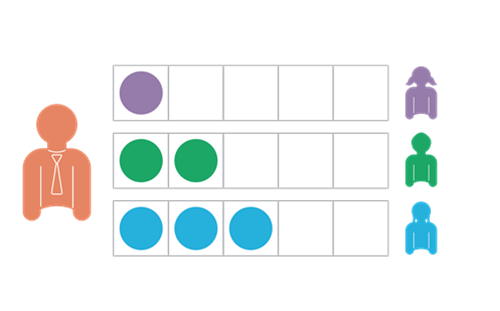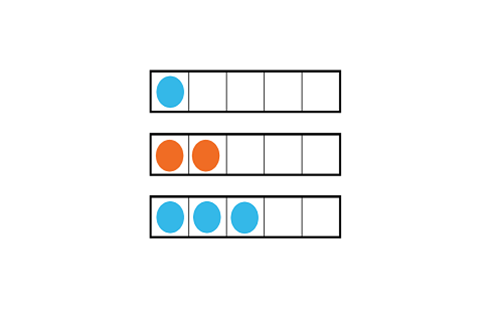Classroom talks
Overview
Running classroom talks regularly is a powerful complement to other forms of instruction because they allow students to develop language, build mathematical thinking skills and create mathematical meaning through collaborative conversations.
Classroom talks typically last from 5 to 15 minutes and create a safe space for mathematical thinking and risk-taking. They also offer educators an opportunity for formative assessment by observing students verbalising their understandings.
The teacher:
- has a goal in mind and selects a prompt accordingly
- provides adequate thinking time
- encourages students to use hand protocols (rather than raising hands) to communicate where they are at with their thinking
- invites students to share their ideas (cold-calling is avoided to maintain a safe space for reluctant contributors)
- accepts all answers without judgement, ensuring a safe space for risk-taking
- facilitates discussion and encourages respectful dialogue
- records student ideas on the board when useful.
The students:
- make the most of the thinking time given; if they come up with one idea, they continue to look for or generate additional ideas
- use subtle hand protocols (thumb and additional fingers at the chest) to indicate to the teacher where they are at with their thinking
- describe their observation or strategy to the group
- listen to and make sense of other students’ ideas and explanations
- may ask clarifying questions about another student’s explanation.
Types of classroom talks
There are different types of classroom talks. Those that are more open-ended, such as Notice and wonder and Same and different, allow for a greater diversity of ideas to be shared. Starting with talks like these can be a powerful way to encourage participation before moving on to Number talks, which are more narrowly focused on using reasoning to solve a specific problem. Here is a brief summary of these three talks.
Notice and wonder
| Brief summary | Example prompt |
|---|---|
|
Students spend initial thinking time making observations about what they see. The teacher facilitates student discussion as they share what they notice and what they wonder. |
What do you notice? What do you wonder?
|
Same and different
| Brief summary | Example prompt |
|---|---|
|
Students spend initial thinking time to compare and contrast two items. The teacher facilitates student discussion as they share their observations about what’s the same and what is different. |
How are they the same? How are they different?
|
Number talk
| Brief summary | Example prompt |
|---|---|
|
Students spend initial thinking time to generate their own solutions to solving problems. The teacher invites students to share their answers and different strategies used to reach a particular total. For more detail on how to run a number talk, see below. |
How many dots do you see? How do you see them?
|
How to run a number talk
- Present the prompt or problem. Pose a question that invites students to work out the total.
Example visual prompt Example question 
How many dots do you see?
How do you see them?

What’s the total number of dots?
How did you work it out?
- Give students time to solve the problem. Tell students to quietly indicate when they have an answer by using a subtle thumb-up at their chest. If they come up with more than one way to get the answer, they can hold up a second thumb to let the teacher know where their thinking is at. This hand protocol is an important replacement for hands-up because:
- it allows those who are still thinking to continue thinking uninterrupted
- it encourages those who think they have finished thinking to keep thinking
- it supports depth rather than speed – this is an opportunity to think about one problem in different ways, not a race to be first.
- Invite all answers from the group. Record all answers without judgement on the board or chart paper. Avoid saying whether the answers given are right or wrong. Adopting an approach that expects more than one answer is a powerful way to help build a learning culture in which mistakes are normalised and celebrated. Here are some ways to respond when more than one answer is provided.
- More than one answer – great! Now we have something to defend.
- It’s great when we have more than one answer. It means we’re going to learn something!
- More than one answer! There must be something interesting here we can learn from.
Examples of the strategy in action

View this example of a number talk that draws on students' use of multiplicative thinking and strategies.

An illustration of a teacher running a number talk with a lower primary class.

This infographic describes components of Classroom talks, a tool used by teachers to support rich, meaningful classroom discussion in mathematics.
Getting started prompts
Classroom talk prompts – Foundation quantifying number
These editable slides provide sample prompts to use when running Classroom talks.

